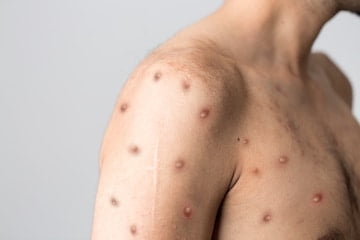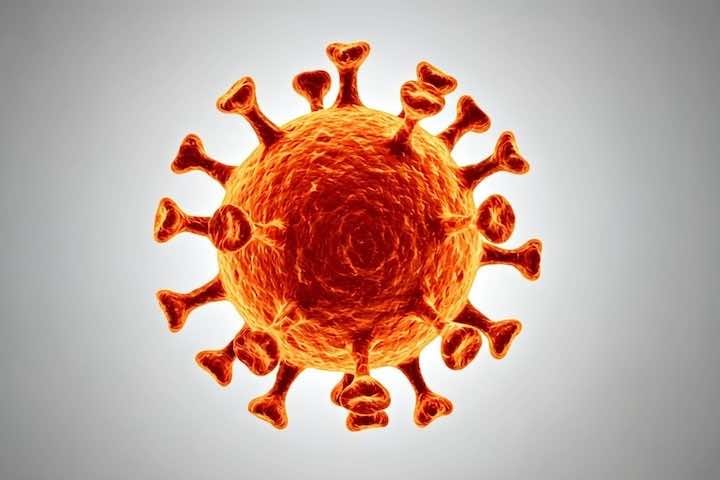This article provides you basic information about Mpox
What is Mpox?
Originally called Monkey-pox Mpox is a disease caused by the monkeypox virus. It is a member of the orthopox family of viruses, which includes small-pox and cow pox. Monkey pox is closely related to small-pox, although typically less severe and less infectious.
Mpox is a zoonotic illness, meaning it can be transmitted from animals to humans, although it can also be spread from human to human.
Its name comes from the fact that the first recorded cases occurred in monkeys, in a Danish research lab in 1958. The first human case was identified in 1970, in the Democratic Republic of Congo.

Where is Mpox?
Mpox is endemic in West and Central Africa,
Most cases here happen because of the consumption of infected wild animals such as primates, squirrels, and other rodents, or by being bitten or scratched by these same animals.
As a disease, monkey pox is of global health concern because cases now present across the world.
The first non-African outbreak occurred in the USA in 2003.
Since then, further outbreaks in Israel, Singapore and the United Kingdom have been associated with travel to endemic countries.

Through 2022 Mpox spread
During May to June 2022, 27 different countries reported around 1,000 cases of confirmed Mpox to the World Health Organization.
Most cases to date have presented through sexual health services, mainly – but not exclusively – involving men who have sex with other men.
This fast and concurrent rise in case numbers in many different non-endemic regions suggests transmission in the community may have been happening for some time.

How is Mpox transmitted?
In animal to human transmission, monkey pox is spread through direct contact with the bodily fluids, blood, skin or lesions of an infected animal.
Typically, this happens in endemic regions, but monkey pox cases in non-endemic areas can be caused by the animal trade, including importation of rodents and non-human primates.
Mpox does not spread easily, contact with an infected person’s skin lesions, or recently contaminated objects such as clothes or bedding, is needed.
Monkey pox can also be acquired by inhaling respiratory droplets, usually over a prolonged face-to-face period.
In the 2022 Mpox outbreak, evidence suggests that human to human transmission is occurring because of close physical contact, including sexual contact. The precise root and nature of this transmission is still being investigated.
Who is at Risk from Mpox
In the UK, the NHS have categorised the risk to the general public as ‘low’.
Studies to identify the causes of transmission for the 2022 outbreak are ongoing, but it would seem men who are gay or bisexual are a higher risk group.
Most people born after 1971, when mandatory smallpox vaccines were stopped, have little immunity to the virus.
This puts most of the working population at some risk of infection
If you work in a higher risk workplace and feel like awareness training around Mpox will be of benefit to your staff we offer an online Mpox Awareness course here

What are the Mpox symptoms?
Mpox shares many symptoms with small pox, although it is usually milder, and less likely to result in death.
It’s important to remember that Mpox is a self-limiting disease. Without any treatment, most people will go on to make a full recovery in 2 to 4 weeks.
Classic symptoms of Mpox include:
- Fever
- Headaches
- Back pain
- Muscle aches
- A lack of energy
- Swollen lymph nodes
and
- Skin lesions. Normally these are on the face, palms, soles of feet and in the mouth. Less commonly, they can occur around the genitals and in the eyes.

The Mortality Rate from Mpox
While unusual, complications of monkeypox include sepsis, secondary infections, encephalitis, and eye infections leading to loss of vision.
Complications are related to factors such as pre-existing health, the type of complication and amount of exposure to the virus.
Young children, and anyone who is immunosuppressed are more susceptible to severe disease.
How to Diagnosis Mpox
Diagnosing Mpox can be difficult. Other viruses with similar symptoms, such as chicken pox, measles, syphilis, or herpes, must be ruled out. Swelling of the lymph nodes is a clear indicator of monkey pox, setting it apart from these other diseases.
For suspected cases of Mpox, a laboratory polymerase chain reaction (or PCR) is the preferred test for a conclusive diagnosis, given it is more accurate and sensitive than other methods such as antigen or antibody detection. Samples from skin lesions – rather than blood tests – provide the most accurate results.
How to treat Mpox
As we’ve seen, for most people Mpox is a mild illness. Without any treatment, a full recovery usually takes 2 to 4 weeks.
However, because you can pass the infection to others you are in close contact with, if your symptoms are mild, you may be required to self-isolate at home.
If your symptoms are more severe, or you’re at a higher risk of becoming very ill, hospital admission may be needed.
Clinical treatment for monkey pox mostly revolves around managing symptoms and preventing complications.
An antiviral small pox drug called Tecovirimat has been licensed for use against monkey pox in the European Union, although this is not yet widely available.
Further Information about Mpox
If you work in a higher risk workplace and feel like awareness training around Monkeypox will be of benefit to your staff we offer an online Mpox course here







